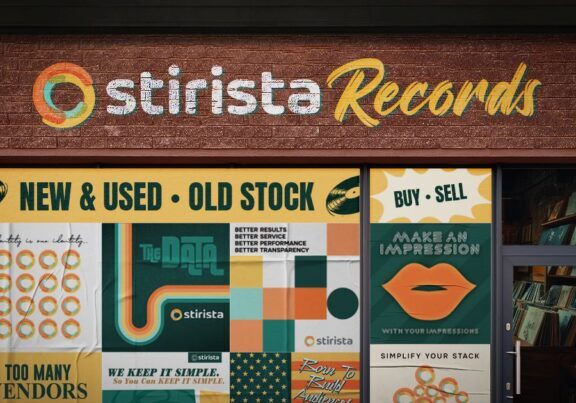An overview of the most popular clean rooms, data management platforms, and customer data platforms

June 12, 2024

We look at the notable features of the most-used DMPs, CDPs, and clean rooms–and whether you need all three, or just one
Data Management Platforms, Customer Data Platforms, and data clean rooms. Besides all utilizing customer data to enhance marketing efforts, what do they have in common?
To be honest, not much–and that’s a good thing. While they may have some overlapping functions, each fulfills a different purpose when it comes to data strategy and marketing. Depending on your data strategy, you may use all three, or just one.
Together, they work to fulfill different aspects of customer and audience journeys–a DMP and a clean room, for example, can work together to segment an audience and check it against a walled garden’s anonymized data for campaign analysis.
While a data clean room serves as a spot for different advertisers to collaborate on data analysis while preserving privacy, DMPs gather mostly third-party data in one place for marketing purposes. CDPs, on the other hand, get more granular and consolidate first-party data on individual customers to map out targeted segments for a campaign.
Let’s take a deeper look at each platform, why you might need it in your data strategy, and the biggest players in each space.
Data clean rooms: an overview
In a data clean room, advertisers can compare their troves of first-party data against anonymized data from walled gardens like Google and Amazon–or alternatively, from other advertisers in a clean room set up by a provider. The insights from such a practice can impact measurement and attribution.
Here’s how it works: big advertisers that contain massive walled gardens of first-party data share privatized aggregated sets of this data (rather than customer-level data). The advertisers can then use their first-party data, in the same space, to compare against the anonymized data. Seeing how the different data sets match up, the advertiser can use the output to verify how their campaign is doing or whether they’re overserving ads to the same audience.
Clean rooms have the advantage of complying with privacy regulations like Europe’s GDPR and California’s CCPA. In the wake of a cookieless future, data clean rooms also have the advantage of focusing on first-party data rather than second- or third-party data.
As a result, clean rooms are rapidly technologically advancing and being adopted among numerous sectors–and the future may see even more come into play. With that in mind, here are today’s most popular data clean rooms.
Popular data clean rooms
- Google Ads Data Hub
- Overview: Advertisers use Google’s clean room to analyze their campaign performance against anonymized data from Google.
- Pros:
- Google is a big landscape–containing plenty of first-party data to compare against.
- It also integrates well with Google’s ad ecosystem.
- The results from Google are grouped over a number of users, protecting privacy while still providing unique insights.
- Cons:
- Google’s Ads Data Hub is tightly integrated with Google’s ad ecosystem–so if you’re trying to advertise elsewhere, it may not be the best clean room for you.
- Amazon Marketing Cloud/Amazon Web Services
- Overview: AWS clean rooms allow partners to analyze shared data sets with enhanced data security.
- Pros:
- Integrates with the AWS ecosystem.
- Enhanced privacy controls means it’s good for industries where privacy is more strict, like health or finance.
- Cons:
- Limited support for data integration from external sources
- Snowflake Data Clean Room
- Overview: Organizations can consolidate data in Snowflake’s cloud, which allows them to conduct various analyses.
- Pros:
- Supports large-scale data collaboration, which makes it suitable for enterprises with large data needs. Good for joint marketing campaigns or complex data projects.
- Cons:
- Can be expensive for large-scale data operations
- Habu
- Overview: A platform for companies to build and manage their own data clean rooms
- Pros:
- Works well across different data environments and platforms
- Strong privacy compliance
- Cons:
- Has some customization limitations
Data management platforms: an overview
A DMP collects, organizes, and activates (mostly) third-party data from various sources. With a focus on discovering new and prospective audiences for marketers, this data is then used to build detailed audience segments to drive targeted advertising and personalization.
Once these profiles are made, they’re anonymized and made available to other tools like ad exchanges, DSPs, and SSPs to improve targeting, personalization, and content. Unlike a CDP, which stores this type of information with a user’s permission, a DMP doesn’t store PII (that’s personally identifiable information) data for very long, in order to comply with privacy laws.
Because DMPs are focused primarily on third-party data–like cookies and IP addresses–they’re rapidly transforming–moving the focus away from cookies–and additionally being integrated into CDPs. But unlike CDPs, DMPs are used primarily for targeted campaign efforts, focusing on anonymized data for marketing purposes.
That said, here are the most popular DMPs in today’s rapidly shifting and evolving landscape.
Popular DMPs
- Adobe Audience Manager
- Pros:
- Built-in integration with Adobe Experience Cloud and Creative Cloud.
- Provides realtime data
- Advanced AI and machine learning capabilities
- Cons:
- Integrating with products outside of Adobe Suite can be challenging
- Pros:
- Oracle BlueKai Data Cloud
- Pros:
- Rich data marketplace
- Cons:
- Privacy concerns
- Pros:
- Lotame
- Overview: End-to-end collaboration, actionable customer intelligence, data, informed audiences. Helps publishers reach new audiences
- Pros:
- Highly flexible and customizable
- Cons:
- Challenges in scaling for large enterprises
- LiveRamp
- Pros:
- Can build audiences specifically for CTV and streaming
- Large set of first- and second- party data
- No reliance on third party cookies
- Cons:
- Slow onboarding process
- Pros:
Customer data platforms: an overview
A customer data platform aggregates customer data (usually first-party data) from a company to create customer profiles for each customer. A CDP focuses on creating a single, comprehensive view of each customer by aggregating data from many sources–allowing for audience segmentation and far more.
The touchpoints a CDP takes into account includes data from websites, apps, CRM systems, transaction databases, email, and social media. Additionally, CDPs use real-time data to provide accurate, constantly updated views of each customer. Some CDPs also incorporate AI and machine learning to generate predictive insights about customers, such as lifetime value and propensity to purchase. With a focus on identity resolution and segmentation, CDPs form the backbone of personalized marketing campaigns.
There are several hundred CDPs to choose from, so we’ll just look at some of the biggest ones in marketing today.
Popular CDPs
- Salesforce Customer 360 Data Cloud
- Pros:
- Integration with Salesforce CRM
- Real-time data processing
- User-friendly interface
- Cons:
- Complexity means technical expertise may be required to fully leverage its capabilities
- Must carefully manage to maintain compliance with privacy regulations
- Pros:
- Tealium AudienceStream
- Pros:
- Robust data governance features
- Real-time data processing
- Integration features
- Cons:
- Complex to implement
- Can be pricey
- Pros:
- Treasure Data
- Pros:
- Comprehensive data handling
- Offers robust data unification and insights, helps businesses leverage their customer data for improved marketing and customer service
- Cons:
- Integration set up
- Less intuitive user interface
- Pros:
- Adobe Experience Platform
- Pros:
- Comprehensive ecosystem
- Advanced analytics
- Scalability
- Cons:
- Complexity and cost
- Learning curve
- Pros:
- Segment
- Pros:
- User-friendly interface
- Real-time data
- Cons:
- Can be expensive, especially for smaller businesses
- Can have a learning curve
- Pros:
Do you need all three?
Some organizations do, particularly ones with advanced data strategy that have complex data needs and numerous ad campaigns going on at once. Some organizations don’t, and may just need one–a CDP, for example–or two in combination. Combined with other tools in the marketing ecosystem–CRMs, DSPs, marketing automation platforms, and more, DMPs, CDPs, and clean rooms are part of a company-wide data strategy that occurs over a number of platforms and tools.
Developing the right data strategy with the right set of tools can be an iterative, constantly evolving process–but it’s one worth undertaking and spending time on. Whether you need just a CDP or all three platforms, it’s worth knowing what’s out there and what can best fit your strategy and goals.


